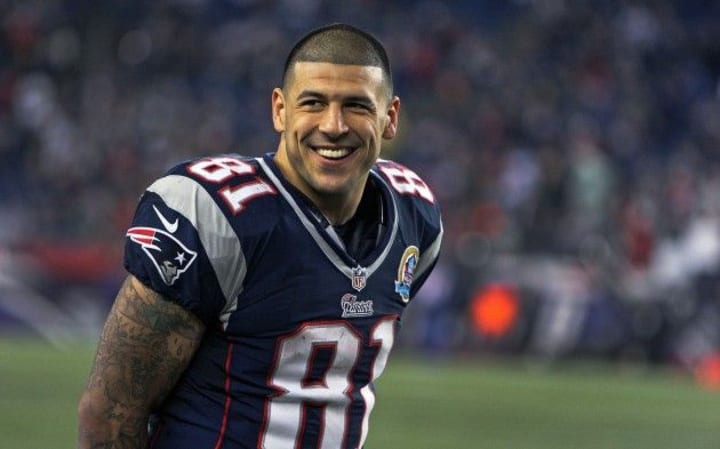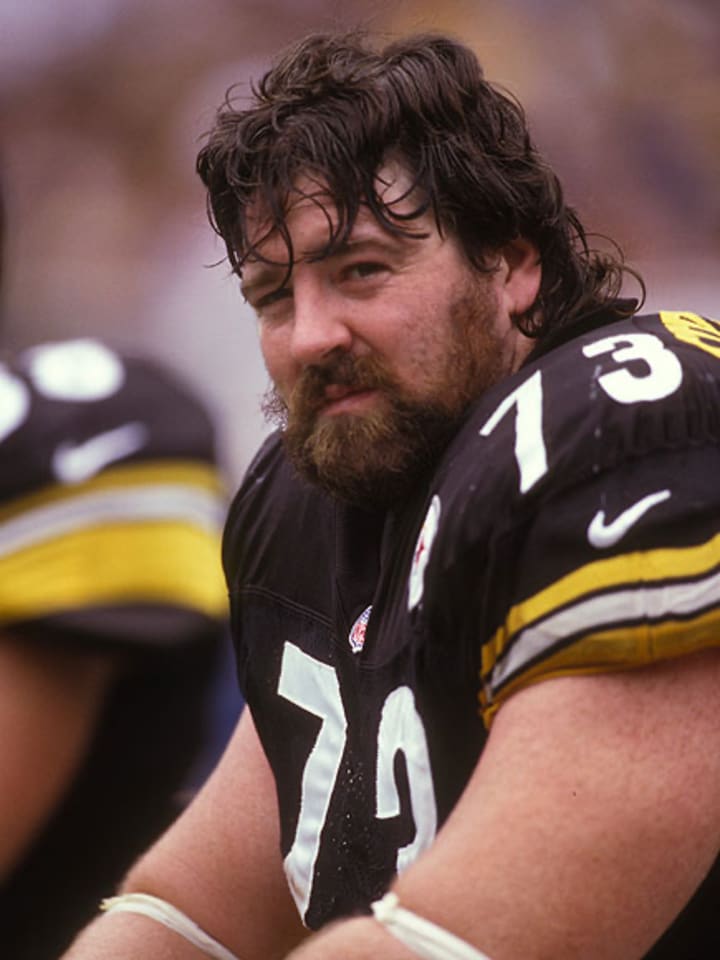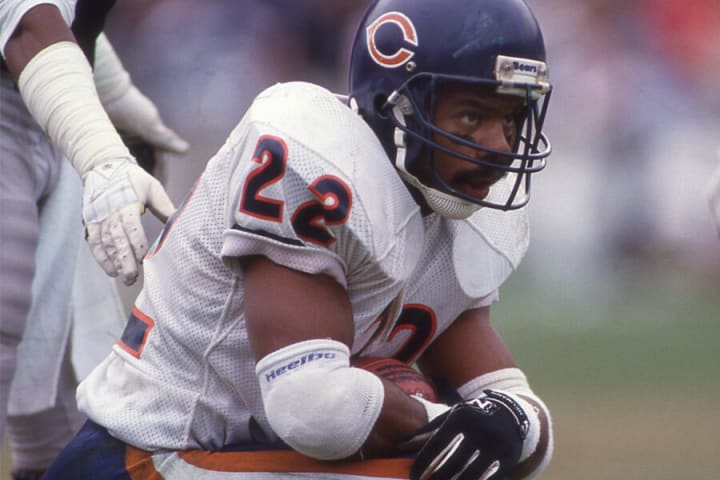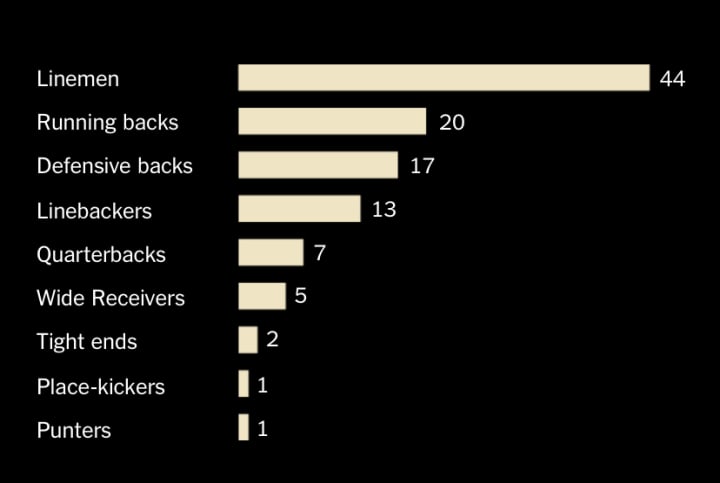Helmets Don't Save Lives
Even minor head injuries are more detrimental than you can imagine.

The conversation on concussion prevention within American football cannot be had without discussing why. The right question to ask is not why concussions occur but why it’s important to limit and prevent them. Within the last decade, a multitude of former NFL players who have been diagnosed with a brain disease known as chronic traumatic encephalopathy (CTE) have taken their own lives. This is not a coincidence but a serious reality faced by real people. Does this mean that the long-term effects of repeated concussions can lead to severe brain changes? Evidently, and if so, what exactly are those changes and just how damaging can the effects be?
Aaron Hernandez's story is one that immediately comes to mind. It has raised great questions and even greater concerns about the safety of the sport.

Hernandez played for the New England Patriots and his contribution to the team was a very notable one. However, his success story was short-lived as he was later charged and sentenced to life in prison for the murder of his friend. Hernandez was acquitted of a double homicide and was a suspect in an attempted double murder before that.
Whilst serving a life sentence, Hernandez took his own life at the young age of 27. His brain was examined and the results were astonishing, shocking scientists and those that knew him. I'm not a scientist and even I was horrified.
His brain showed advanced signs of the brain disease CTE, resulting in him receiving a stage 3 diagnosis, which is currently the worst diagnosis ever given to someone his age (Killer Inside: The Mind of Aaron Hernandez). What shocked me was the state of his brain and if you understand what the damage means and it's impact, it is very troubling. I saw a brain of a man that was clearly suffering.

Does this mean that his violent behavior was influenced by CTE? One cannot rely on that entirely but one cannot dismiss it either. What can be said is that football contributed heavily to the formation of the disease - which in turn, influenced his behavior.
You may read that and assume I am excusing the atrocious actions of a killer. In reality, I am discussing the factors that could have led to the severity of those actions.
The revelations on the condition of Hernandez's brain led his family to sue the NFL for withholding the risks associated with the sport from the players. Many professional football players and over 20 hall of famers have come forward in recent years, confirming that nowhere in their contract did it mention the risks of concussions. Furthermore, many stated that they were unaware of the severity that a concussion could have. I found that very interesting because you would expect a professional in their field to be well versed with the risks that come with it. However, it appeared that many were not aware of just how damaging a head injury can really be. Does this mean the NFL has tried to hide this fact? Probably not but it took them a long time to acknowledge the impact football has.
I want to say that ignoring this has created irreversible damage but what if it all could have been prevented? That's worse. What is interesting to note is that violent behavior amongst NFL players is not uncommon especially in players with CTE. That's not to say every single football player has the disease or is a criminal of some sort, all it means is that certain areas of the brain become so damaged that things like rational, decision making and impulse control are affected. Thus, increasing the likelihood of violent behavior. Jovan Belcher who played for the Kansas City Chiefs is another footballer who seemingly deteriorated in front of everyone's eyes - transforming into what many would call a monster.

During an argument, Belcher shot the mother of his 3 month year old daughter 9 times and in front of his mother in law. He then drove to the Chiefs practice facility where he asked the Chiefs general manager and the owner to look after his daughter after letting them know he had just killed his girlfriend. Whilst efforts were made by those around him at the time to dissuade him from harming himself, it was futile and Belcher announced that he had to end his life. He made a sign of a cross before shooting himself. Tests would later show that he had CTE and his family filed a wrongful death lawsuit at the end of the following year. The lawsuit claimed that:
"In the months leading up to Decedent's death, Defendant was aware of Decedent's symptoms and signs of cognitive and neuropsychiatric impairment. Defendant micromanaged virtually every aspect of Decedent's life when it came to his physical abilities to perform in the workplace, including analyzing his diet, speed, strength and body-mass index. Yet when it came to monitoring Decedent's mental health and neurological capacities, Defendant disregarded evidence of impairments and fostered an environment where Decedent was required to play through his injuries and become exposed to further neurological harm."
The Patterns
Mike Webster (1952-2002)

The first person to be diagnosed with CTE was Mike Webster. He is considered one of, if not the best center in NFL history, obtaining four super bowl rings and now a hall of famer. After retirement, Webster's mental health tormented him and it was evident in his behavior. He would forget to eat, appeared lethargic and displayed behavior that disturbed his wife and children such as urinating in an oven at one point. He would wander about the streets of Pittsburg, ranting to strangers at times and sleeping under bridges or in his truck because he could not remember his way home. Webster struggled with trying to find sleep and in extreme desperation, he would use a taser on himself, zapping himself into an unconscious state just so he could sleep.
Justin Strzelczyk (1968-2004)

Strzelczyk's unfortunate death is what began the debate on the link between playing football and the brain disease CTE as he was one of the first footballers to be diagnosed with it. He was a defensive linesman for the Pittsburg Steelers for close to a decade. Prior to the tragic events that led to his death, Strzelyck's behavior had been described as erratic. His sister shared that he had mood swings - moments of anger to him being calm once again.
"It was like he was somebody else, it wasn't the Justin I knew." Melissa Strzelczyk expressed.
Justin Strzelyck died in a high speed car crash whilst driving against traffic. It was initially thought that the former footballer was driving under the influence, however that was not the case. Instead, CTE was to blame and sadly, many other NFL players would find themselves experiencing what he did. His ex-wife no longer watches the game and has said that in doing so she feels like she's "watching people die."

Andre Waters (1962-2006)

Andre Waters sadly took his own life at the age of 44 after having dealt with depression and dementia. His brain showed heavy signs of brain damage and a bigger blow to his family was learning that he had CTE. The results suggested that "he would have been fully incapacitated" within 10-15 years and it was heartbreaking to know that someone his age had the brain of someone in their late 80's.
Dave Duerson (1960-2011)

Before taking his own life, Duerson sent a text message to his family, requesting that his brain be donated and studied for CTE. This point emphasizes that he may have been experiencing a great deal of turmoil, the kind that he could only explain as a result of his career. It was eventually confirmed that he did suffer from the degenerative brain disease. Duerson was 50 years old when he ended his own life.
Adrian Robinson (1989-2015)

Robinson was 26 when he took his life and was found to have CTE. 2 months prior to his passing, he had signed a new contract with the Canadian Football League. Perhaps one would say there were new beginnings lined up in his path and no clear reason for a young man in his position to end his life. However, this pattern has been all too common and it speaks volumes of what is at stake.
The relationship between brain and behavior has been documented and remains a major area of study today. Which is what I've spent the last 4 years studying. As such, it cannot be ignored that a significant number of former NFL players have committed suicide. Repeated blows to the head can lead to CTE which can produce symptoms of depression, aggression and disorientation (NFL Concussions Fast Facts). These changes come about in behavior, explaining the violent nature of some towards others or themselves. Thus raising the question of just how many lives could have been saved if more was done to protect football players.


The number of deaths by suicide is too high to be a coincidence and it highlights the severity that comes with head trauma. It also raises even further questions as to just how reliable helmets are and why they haven’t been enough to limit the risk at hand. Many believe that helmets are meant to protect against concussions, however, their actual purpose is to prevent head fractures. So, you will feel the blow and you will experience a head injury of sorts but it's okay because your skull will still be in tact.

Over the last several years, the NFL has been sued for hiding the risks of concussions from football players and American football has been blamed for a decline in mental health and the deaths of many. Does knowing the risk change the likelihood of head trauma? No, it does not. However, football players have a right to know just how at risk they are and it has taken many suicides and law suits for there to be a shift. Despite this, the NFL does not accept responsibility, although they can acknowledge the events that have occurred over the years. In order for there to be some form of change, they should be capable of acknowledging that football can lead to severe brain trauma. That brain trauma can result in the development of brain diseases and that these changes can alter behavior in a very dangerous way. By acknowledging and accepting these notions, they can begin to move forward in finding methods to reduce the risk.

As it stands, the latest changes have come in the form of play, where a new rule instructs players to lower their helmets. The purpose of this rule is to prevent head on collisions when tackles are made and failure to do so now results in a foul. This rule was met with a lot of disapproval simply because there are certain ways the game is meant to be played and has been played (Connolly). Changing that would not make football what it is and this would appear to be the general consensus amongst players. The most important thing is the preservation of life and since the implementation of the rule, the number of concussions within the NFL has not seen a significant decrease. Whilst helmets can withstand a great deal of force, they aren’t enough to ensure that the brain doesn’t shake upon impact of any kind. That is where the problem lies.
A longitudinal study that was done to see the effects of mild concussions within young football players found that even in the absence of a concussion, brain changes were evident. This research is a powerful source of information because it offers insight into just how detrimental knocks to the head can be. If changing the rules for safety measures is not enough and if helmets don’t protect footballers to the extent they need, then what exactly needs to be done? Whilst it is true that a contact sport like American football will remain dangerous, the point is to reduce the dangers significantly.

Helmet's Don't Save Lives
As I have been writing this, I learned of the tragic passing of Russian hockey player, Timur Faizutdinov. During a game, the 19-year-old was struck with a puck on the side of his head. He immediately appeared disoriented and in possible pain, raising both arms to his head and then spinning a few times before crumbling down onto the ice. It appeared as though he attempted to stand up but could not and a few minutes later, he was stretchered off and taken to the hospital. Timur Faizutdinov died 3 days later and details on his injuries have not been revealed. What is clear is that a hockey player, wearing the right gear, including a helmet, sustained a hit to the head and died.

Unfortunately, head injuries during hockey games have killed people and it continues to happen despite these players having had helmets on. In fact, head injuries are common in a lot of contact sports, which is no surprise. I chose to focus on the NFL due to the extensive research and clear issue that many do not discuss.
Helmets aren’t enough to prevent the ongoing crisis and lasting impact that comes with concussions. The sport has been around for a very long time and it remains heavily loved and admired. Perhaps the increased awareness will lead to less people partaking in the sport and the probability of it potentially dying out may begin to encourage greater safety measures. Conversations should be held on the impacts of concussions but even more than that, continued research and greater efforts should be continuously applied.
There is a great negative influence that comes with repeated head injuries and denying this reality is even worse than the impact itself. The aforementioned facts that come in the form of statistical evidence, research and survivor testimonials is a clear indicator of the dangers that come with the beloved sport. The message is not to say that the sport should cease to exist but rather that certain changes are necessary to ensure the future of its survival. With the constant revelations brought to light on the severity of concussions, a decline in the sports participation is likely to become paramount. Whilst many fear that a change to rules, head gear or current forms of play may change what millions have adored for centuries, the reality is the current path will lead to the death of the game. Taking what has been discovered and applying it towards the safety and preservation of life should be the main focus in keeping American football alive.
Joy Johane
About the Creator
Joy
I write. The rest does not matter.







Comments
There are no comments for this story
Be the first to respond and start the conversation.